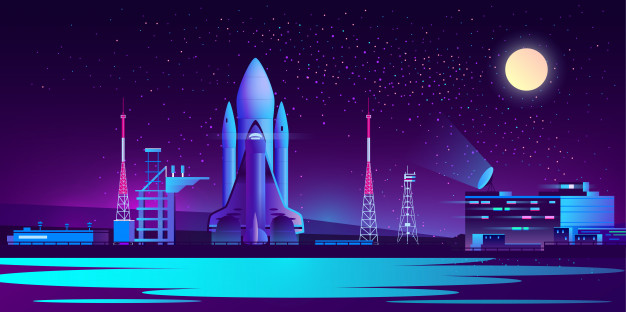ISRO recently announced the launch date (July 15, 2019) of Chandrayaan-2 mission, after the long delay from the scheduled launch.
Reasons for the delay in the mission
- Chandrayaan-2‘s predecessor, Chandrayaan-1, was an Orbiter mission which was sent way back in 2008.
- Following this, according to the original schedule, Chandrayaan-2 was to be launched in 2012 itself. · But at that time, it was supposed to be a collaborative mission with the Russian space agency, Roscosmos, which was to provide the lander module.
- The Russians, however, withdrew from the missions. [This was after Russia‘s similarly-designed lander for another mission developed problems in 2011.]
- This left ISRO to design, develop and build the lander on its own.
- As this was new to ISRO, it had led to considerable delay from the original schedule.
What was Chandrayaan-1 mission?
- The Chandrayaan-1 mission was ISRO‘s first exploratory mission to the moon, in fact to any heavenly body in the space.
- It was designed to just orbit around the moon and make observations with the help of the instruments on board.
- The closest that Chandrayaan-1 spacecraft came to the moon was in an orbit 100 km from its surface.
- For largely symbolic reasons, though, the Chandrayaan-1 mission made one of its instruments crash-land on the moon‘s surface.
- It was the Moon Impact Probe, or MIP, a 35-kg cube-shaped module with the Indian tricolor on all its sides.
- MIP left an Indian imprint on the moon‘s surface.
- Besides, ISRO also claims that while on its way, MIP had sent data that showed evidence for the presence of water on the moon.
- But unfortunately, those findings could not be published because of anomalies in calibration of the data.[The confirmation for water had come through another onboard instrument, the M3 or Moon Mineralogy Mapper, that had been put by NASA.]
- Given the above, Chandrayaan-2 is a logical progression on Chandrayaan-1 and a more sophisticated mission with various objectives.
What are Chandrayaan-2‟s features?
- Chandrayaan-2 is India‘s first lander mission.
- It consists of an Orbiter, Lander and Rover, all equipped with scientific instruments to study the moon.
- The Lander and Rover modules will separate from the orbiter and make a soft-landing on moon‘s surface (either on September 5 or 6, 2019).
- The lander and rover are designed to work for only 14 days (1 lunar day) while the orbiter would remain in orbit for a year.
- Orbiter – The Orbiter would once again watch the moon from a 100-km orbit.
- The Orbiter is a 2379-kg spacecraft with 7 instruments on board.
- It is equipped with different kinds of cameras to take high-resolution three-dimensional maps of the surface.
- It also has instruments to study the mineral composition on the moon and the lunar atmosphere, and to assess the abundance of water.
- The Orbiter will observe lunar surface and relay communication between Earth and the Lander.
- Lander – ISRO has named the Lander module as Vikram, after Vikram Sarabhai, the pioneer of India‘s space programme.
- The 1471-kg lander will remain stationary after touching down on the moon‘s surface.
- It will carry three instruments that will mainly study the moon‘s atmosphere. · One of the instruments will also look out for seismic activity on lunar surface.
- Rover – The Rover is a 6-wheeled, Artificial Intelligence-powered and solar-powered vehicle named Pragyan, meaning wisdom.
- Once on the moon, the rover will detach itself from the lander.
- Equipped with two instruments, it would slowly crawl on the surface, making observations and collecting data.
- Its primary objective is to study the composition of the moon‘s surface near the landing site.
- It would also determine the abundance of different elements on the moon‘s surface.
What are the challenges?
- The Lander is the distinguishing feature as this is the first time that ISRO is attempting to soft-land a module in extra-terrestrial space.
- Once the Lander and the Rover, enter the Moon‘s gravity, they would be in a state of free fall.
- That could end in crash-landing and destruction of instrument.
- The main challenge is thus in controlling its speed as it approaches the surface.
- To enable a smooth landing, the speed of the Lander just ahead of touchdown should be 1 m/s (3.6 km/h) or less.
- Due to lack of air to provide drag, these instruments cannot make use of parachute-like technologies.
- So instead, the Lander fires thrusters in the opposite direction to slow down.
What is the significance?
- With Chandrayaan-2, India will become only the 4th country in the world to land a spacecraft on the moon.
- So far, all landings, human as well as non-human, on the moon have been in areas close to its equator.
- This was mainly because this area receives more sunlight that is required by the solar-powered instruments to function.
- Chandrayaan-2 will make a landing at a site where no earlier mission has gone, near the South pole of the moon.
- It is a completely unexplored territory and therefore offers great scientific opportunity for the mission to discover something new.
- [Incidentally, the crash-landing of the MIP from the Chandrayaan-1 mission had also happened in the same region.]
- South pole – The south pole of the moon holds the possibility of the presence of water.
- This is one aspect that would be probed meticulously by Chandrayaan-2. In addition, this area is also supposed to have ancient rocks and craters. It can thus offer indications of history of moon, and contain clues to the fossil records of early solar system.










I’m curious to find out what blog system you are using?
I’m having some small security problems with my latest site
and I would like to find something more risk-free. Do you have any suggestions?
I do accept as true with all of the concepts you have presented for your post. They’re really convincing and can definitely work. Still, the posts are too short for novices. May just you please extend them a bit from subsequent time? Thank you for the post.
Actually, I thought crisp and short content would be of interest to the readers. Will try to write long format articles
I really like your writing style, wonderful information, regards for posting : D.
Thank you
hey there and thank you for your info – I’ve definitely picked up anything new from right here. Well I am adding this RSS to my email and could look out for much more of your respective exciting content. Ensure that you update this again very soon..
Wow! This blog looks exactly like my old one! It’s on a completely different subject but it has pretty much the same page layout and design. Wonderful choice of colors!
Thank you
you are truly a good webmaster. The web site loading velocity is incredible. It sort of feels that you are doing any distinctive trick. In addition, The contents are masterpiece. you’ve done a wonderful process in this subject!
Thank you
We are a group of volunteers and opening a brand
new scheme in our community. Your website provided us with useful info to work on. You’ve performed a formidable job
and our whole neighborhood can be grateful to you.
My site :: tracfone 2022
Pretty nice post. I just stumbled upon your blog and wished
to say that I’ve truly enjoyed browsing your blog posts.
After all I’ll be subscribing to your feed and I hope you
write again soon!
Here is my page … tracfone special coupon 2022